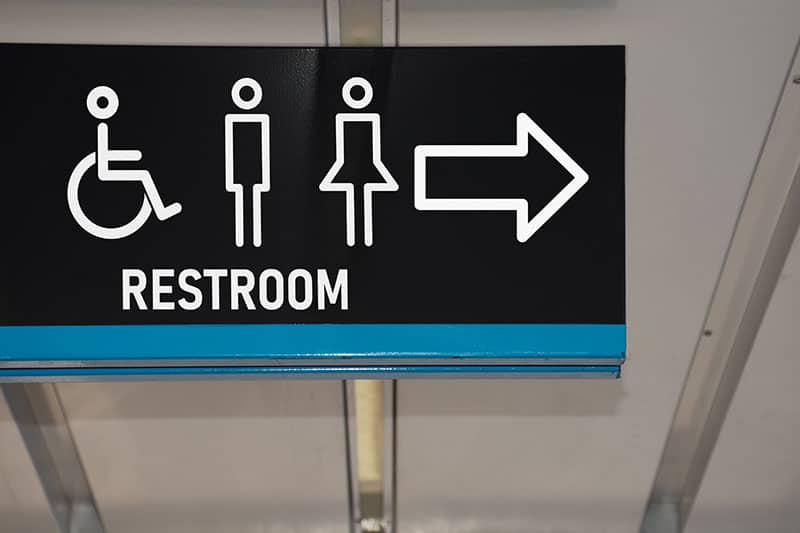Understanding ADA Compliant Signs: Ensuring Accessibility and Compliance

In today’s world, ensuring that all individuals have equal access to public spaces is not just a moral obligation but a legal one. The Americans with Disabilities Act (ADA) requires businesses and public facilities to make their premises accessible to everyone, including individuals with disabilities. One crucial aspect of this accessibility is the implementation of ADA compliant signs. These signs are essential for guiding, informing, and ensuring the safety of all visitors. In this blog post, we will explore what ADA compliant signs are, the key guidelines for their design, the benefits of compliance, and the various types of ADA signs.
What Are ADA Compliant Signs?
ADA compliant signs are designed to be easily readable and understandable by everyone, including people with disabilities. These signs play a critical role in making spaces accessible by providing necessary information and direction. ADA signs typically feature high contrast, tactile text, and Braille to ensure they are usable by individuals with visual impairments. They are required in various locations, such as restrooms, exits, stairways, and room identifiers, to facilitate navigation and access within buildings.
The ADA sets forth specific guidelines to ensure that these signs are effective. For instance, signs must be placed at certain heights and locations, use non-glare finishes, and include specific fonts and character sizes. These guidelines help create a standardized approach to accessibility, making it easier for individuals with disabilities to navigate unfamiliar environments.
Key Guidelines for ADA Signage Design
Designing ADA compliant signs requires adherence to several key guidelines. These guidelines ensure that the signs are both functional and accessible:
a. Contrast and Color: ADA signs must have a high contrast between the text and the background to ensure readability. Typically, light-colored text on a dark background or vice versa is recommended. The use of color should be thoughtful, avoiding combinations that might be challenging for individuals with color blindness.
b. Font and Size: The text on ADA signs should be in a sans-serif font, as these are easier to read. The size of the characters should be large enough to be read from a reasonable distance, with specific height requirements depending on the sign’s purpose and location.
c. Braille and Tactile Text: ADA signs must include Grade 2 Braille, placed directly beneath the corresponding text. Tactile characters should be raised at least 1/32 inch from the surface of the sign, allowing individuals to read by touch.
d. Placement and Mounting: Signs should be mounted at a height between 48 and 60 inches from the ground to ensure they are accessible to everyone, including individuals in wheelchairs. Additionally, they should be placed in consistent locations, such as on the latch side of doors, to facilitate easy discovery and use.
Benefits of ADA Compliant Signs
Implementing ADA compliant signs brings numerous benefits, both for businesses and the community:
a. Legal Compliance: Adhering to ADA signage requirements helps businesses avoid legal issues and potential fines. Non-compliance can result in lawsuits and significant financial penalties, making it crucial for businesses to understand and implement these guidelines.
b. Enhanced Accessibility: ADA signs make spaces more navigable for everyone, including individuals with disabilities. This enhanced accessibility ensures that all visitors can find their way around with ease, improving their overall experience.
c. Positive Brand Image: Businesses that prioritize accessibility demonstrate a commitment to inclusivity and social responsibility. This positive brand image can enhance customer loyalty and attract a broader customer base, including individuals with disabilities and their families.
d. Improved Safety: Proper signage helps prevent accidents and emergencies by clearly marking exits, restrooms, and other important areas. This is particularly important in emergency situations, where clear, readable signs can guide individuals to safety.
Types of ADA Compliant Signs
There are several types of ADA compliant signs, each serving a unique purpose. Understanding these types can help businesses ensure they have the right signage in place:
a. Identification Signs: These signs identify rooms, spaces, and functions within a building, such as restrooms, conference rooms, and offices. They must include tactile text and Braille to ensure accessibility for visually impaired individuals.
b. Directional Signs: Directional signs guide individuals to specific locations within a facility. These signs should be placed at key decision points, such as intersections and hallways, and must include clear, readable text and arrows.
c. Informational Signs: Informational signs provide essential information about the building or its facilities, such as operating hours, rules, and regulations. These signs should also adhere to ADA guidelines to ensure they are accessible to all.
d. Safety and Warning Signs: Safety and warning signs alert individuals to potential hazards or emergency procedures. These signs must be easily readable and located in prominent positions to effectively communicate the necessary information.
Conclusion
ADA compliant signs are vital for creating accessible, inclusive, and safe environments. By understanding and implementing the key guidelines for ADA signage design, businesses can ensure they meet legal requirements, enhance accessibility, and improve the overall experience for all visitors. From identification and directional signs to informational and safety signs, each type plays a crucial role in guiding and protecting individuals within public spaces. Prioritizing ADA compliant signs is not just about compliance; it’s about fostering an inclusive society where everyone can navigate and enjoy public spaces with ease.
Three Locations to Serve You
Charleston, SC
(843) 552-2626
Columbia, SC
(803) 731-2001
Jacksonville, FL
(904) 724-4321



0 Comments